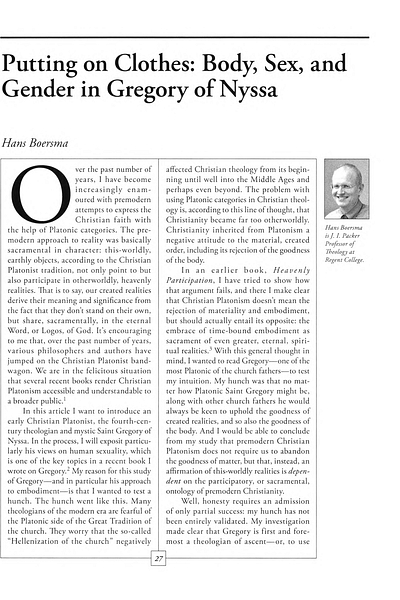Crux 54/2 (2018): 27–34
Over the past number of years, I have become increasingly enamoured with premodern attempts to express the Christian faith with the help of Platonic categories. The premodern approach to reality was basically sacramental in character: this-worldly, earthly objects, according to the Christian Platonist tradition, not only point to but also participate in otherworldly, heavenly realities. That is to say, our created realities derive their meaning and significance from the fact that they don't stand on their own, but share, sacramentally, in the eternal Word, or Logos, of God. It's encouraging to me that, over the past number of years, various philosophers and authors have jumped on the Christian Platonist bandwagon. In this article I want to introduce an early Christian Platonist, the fourth-century theologian and mystic Saint Gregory of Nyssa. In the process, I will exposit particularly his views on human sexuality, which is one of the key topics in a recent book I wrote on Gregory. In an earlier book, Heavenly Participation, I have tried to make clear that Christian Platonism doesn't mean the rejection of materiality and embodiment, but should actually entail its opposite: the embrace of time-bound embodiment as sacrament of even greater, eternal, spiritual realities. With this general thought in mind, I wanted to read Gregory--one of the most Platonic of the church fathers--to test my intuition. My hunch was that no matter how Platonic Saint Gregory might be, along with other church fathers he would always be keen to uphold the goodness of created realities, and so also the goodness of the body.
Download



